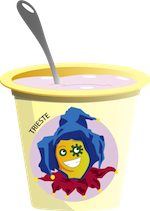Team:Trieste/data
From 2012.igem.org
(Difference between revisions)
Corsogiulia (Talk | contribs) |
Drikicmarija (Talk | contribs) |
||
| Line 35: | Line 35: | ||
<td><h3>BBa_K875003, CymR:</h3> | <td><h3>BBa_K875003, CymR:</h3> | ||
<br/> | <br/> | ||
| - | We expressed succesfully the CymR. We also showed his stringency as repressor of the T5 Cumate Operator. Together CymR and T5 Cumate Operator create a safe and tightly regulated gene guard system, which keeps under control the bacterial growth. | + | We expressed succesfully the CymR. We also showed his stringency as repressor of the T5 Cumate Operator. Together, CymR and T5 Cumate Operator, create a safe and tightly regulated gene guard system, which keeps under control the bacterial growth. |
<br/><br/></td> | <br/><br/></td> | ||
</tr> | </tr> | ||
Revision as of 00:21, 27 September 2012
Data
More
An overview of our system

This is a diagram summarising our system. It consists of two parts: the production of Ab against NoroVirus and the gene guard.
Concerning the gene guard, CymR inhibits the T5 Cumate Operator Promoter avoiding the production of the T4 Holin (permeabilizes the cytoplasmatic membrane) and the LL 37 cathelicidin (human antimicrobial peptide able to disrupt the outer membrane).
When the cumate is given, it binds and inactivates the CymR, derepressing the T5 Cumate Operator Promoter and allowing the expression of T4 Holin, that permeabilizes the cytoplasmatic membrane, allowing the secretion of LL 37 that disrupt the outer membrane.
Moreover, the horizontal transfer from our Nissle into another bacteria is avoided thanks to our gene guard. The receiving bacteria do not produce the CymR repressor, so the T5 Cumate Operator Promoter is activated allowing T4 Holin and LL 37 expression. Bacteria die!
Our favourite parts:
 |
BBa_K875001, T5 cumate operator:We demonstrated that this promoter is very strong and strictly regulated. Thanks to its rapid responsiveness it's one of the first candidates for the toxin expression and production in case of necessity. |
 |
BBa_K875003, CymR:We expressed succesfully the CymR. We also showed his stringency as repressor of the T5 Cumate Operator. Together, CymR and T5 Cumate Operator, create a safe and tightly regulated gene guard system, which keeps under control the bacterial growth. |
 |
BBa_K875004, LPP-OmpA-scFv:We verified the production of this protein at high yield. LPP-OmpA system is a very powerful method for displaying proteins on the external membrane, in this case the antibody scFv 54.6. |
The part we improved:
 |
BBa_K875020, Beta-Glucosidase (Osaka 2010):This composite part is developed by previous work by UNITS iGEM team 2011 and Edinburgh team 2011. We improved and characterized this part demonstrating its efficiency. |
Other parts that we developed:
BBa_K875002, T5 Lac Operator:
We showed that this promoter comes very handy for protein expression tests.
BBa_K875005, LPP-OmpA-SIP:
We designed this biobrick containing SIP as a valid alternative to scFv, because SIP confers bivalent binding properties to the antibody.
BBa_K875006, PelB-scFv:
We created this composit biobrick to use as a system which allows secretion of proteins, in this case the antibody, first into periplasm and then extracellularly.
BBa_K875007, PelB-SIP:
We built this biobrick (secreted version of SIP) because soluble form of SIP plays an important role in enteric infections.
BBa_K875008, Tse2 toxin:
We demonstrated that this composit is an important suicide mechanism able to arrest the growth of prokaryotic cells.
BBa_K875009, LL 37:
The LL 37 is a very powerful human antimicrobial peptide that kills bacteria. We are developing a new construct combining the toxin with the T4 holin which breaks the inner membrane allowing the LL 37 to reach his target.







 "
"









